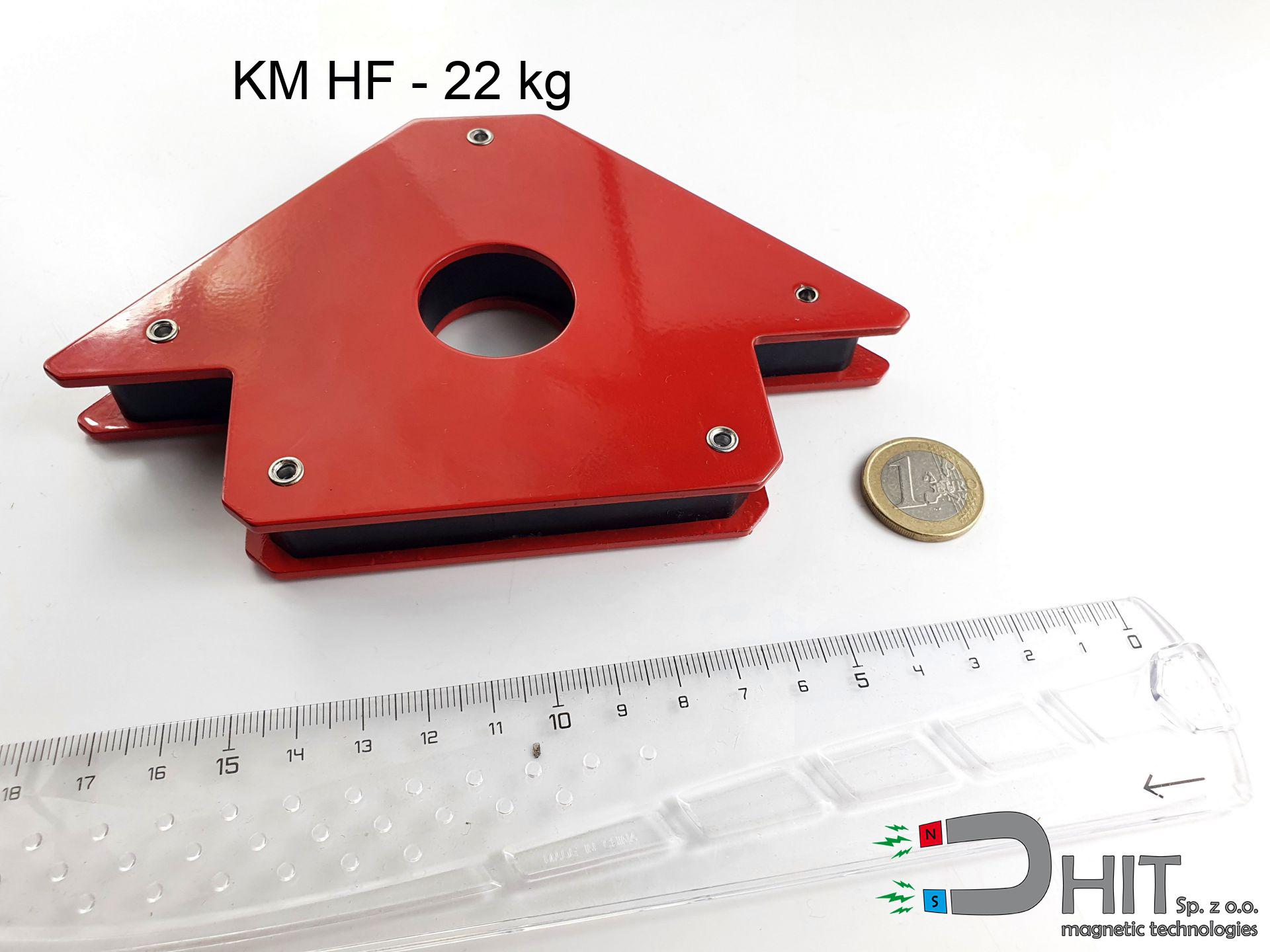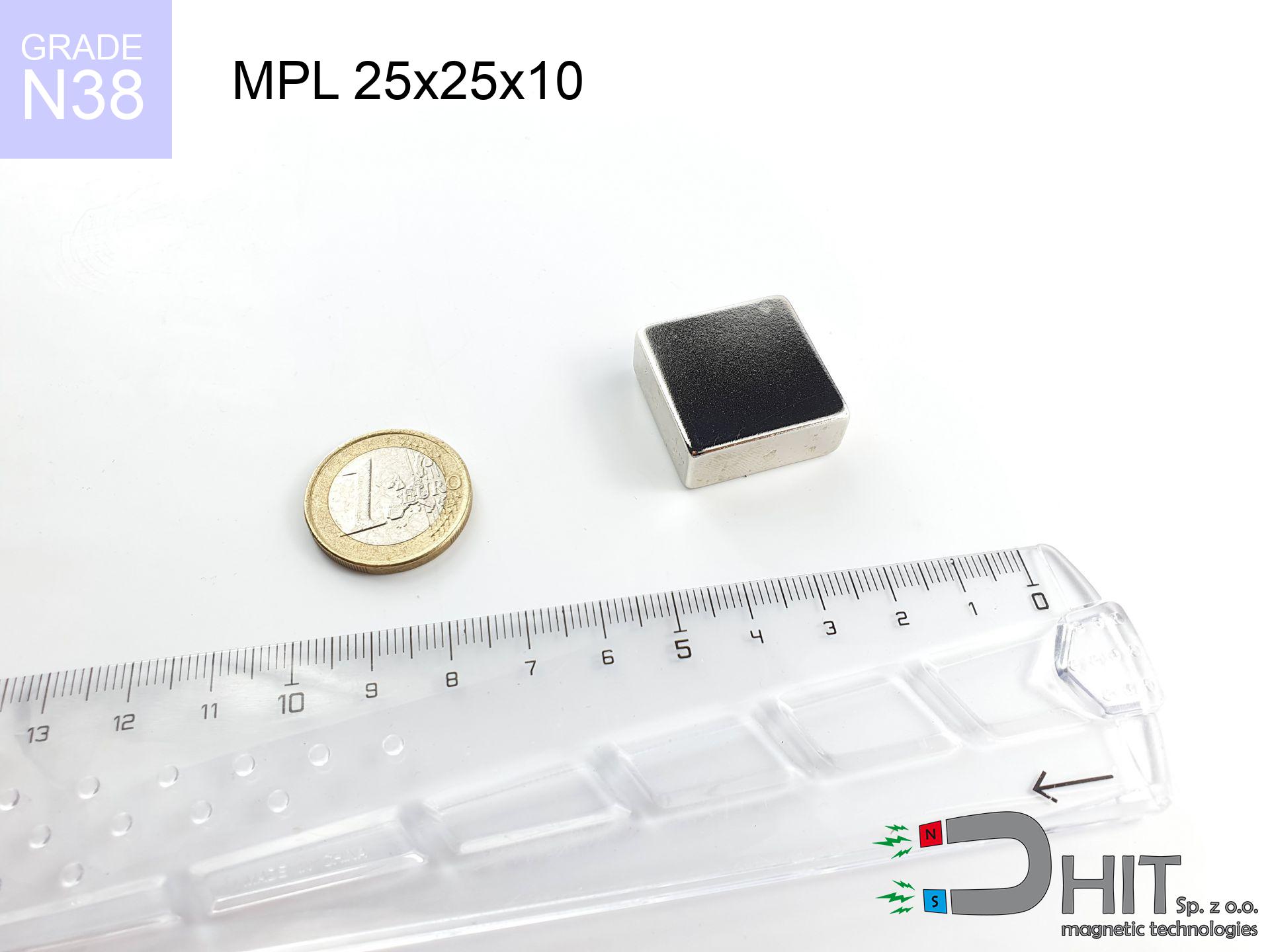KM HF - 22 kg - magnetic bracket
magnetic bracket
Catalog no 170257
GTIN/EAN: 5906301813699
Weight
593 g
Load capacity
22.00 kg / 215.75 N
29.52 ZŁ with VAT / pcs + price for transport
24.00 ZŁ net + 23% VAT / pcs
bulk discounts:
Need more?
Pick up the phone and ask
+48 888 99 98 98
or drop us a message through
inquiry form
the contact section.
Specifications and appearance of neodymium magnets can be checked on our
magnetic calculator.
Same-day processing for orders placed before 14:00.
Technical - KM HF - 22 kg - magnetic bracket
Specification / characteristics - KM HF - 22 kg - magnetic bracket
| properties | values |
|---|---|
| Cat. no. | 170257 |
| GTIN/EAN | 5906301813699 |
| Production/Distribution | Dhit sp. z o.o. |
| Country of origin | Poland / China / Germany |
| Customs code | 85059029 |
| Weight | 593 g |
| Load capacity ~ ? | 22.00 kg / 215.75 N |
| Manufacturing Tolerance | ±1 mm |
Physical properties of sintered neodymium magnets Nd2Fe14B at 20°C
| properties | values | units |
|---|---|---|
| Vickers hardness | ≥550 | Hv |
| Density | ≥7.4 | g/cm3 |
| Curie Temperature TC | 312 - 380 | °C |
| Curie Temperature TF | 593 - 716 | °F |
| Specific resistance | 150 | μΩ⋅cm |
| Bending strength | 250 | MPa |
| Compressive strength | 1000~1100 | MPa |
| Thermal expansion parallel (∥) to orientation (M) | (3-4) x 10-6 | °C-1 |
| Thermal expansion perpendicular (⊥) to orientation (M) | -(1-3) x 10-6 | °C-1 |
| Young's modulus | 1.7 x 104 | kg/mm² |
Elemental analysis
| iron (Fe) | 64% – 68% |
| neodymium (Nd) | 29% – 32% |
| boron (B) | 1.1% – 1.2% |
| dysprosium (Dy) | 0.5% – 2.0% |
| coating (Ni-Cu-Ni) | < 0.05% |
Sustainability
| recyclability (EoL) | 100% |
| recycled raw materials | ~10% (pre-cons) |
| carbon footprint | low / zredukowany |
| waste code (EWC) | 16 02 16 |
Other deals
Advantages and disadvantages of Nd2Fe14B magnets.
Advantages
- They virtually do not lose power, because even after 10 years the performance loss is only ~1% (based on calculations),
- Magnets perfectly resist against loss of magnetization caused by foreign field sources,
- Thanks to the elegant finish, the coating of Ni-Cu-Ni, gold-plated, or silver gives an clean appearance,
- They are known for high magnetic induction at the operating surface, which increases their power,
- Through (appropriate) combination of ingredients, they can achieve high thermal strength, allowing for action at temperatures reaching 230°C and above...
- Possibility of exact forming and adapting to concrete applications,
- Versatile presence in electronics industry – they are used in magnetic memories, motor assemblies, medical devices, and modern systems.
- Relatively small size with high pulling force – neodymium magnets offer high power in small dimensions, which makes them useful in compact constructions
Weaknesses
- At very strong impacts they can break, therefore we advise placing them in strong housings. A metal housing provides additional protection against damage, as well as increases the magnet's durability.
- Neodymium magnets decrease their power under the influence of heating. As soon as 80°C is exceeded, many of them start losing their power. Therefore, we recommend our special magnets marked [AH], which maintain durability even at temperatures up to 230°C
- When exposed to humidity, magnets start to rust. To use them in conditions outside, it is recommended to use protective magnets, such as magnets in rubber or plastics, which prevent oxidation as well as corrosion.
- We recommend a housing - magnetic holder, due to difficulties in realizing threads inside the magnet and complicated forms.
- Possible danger to health – tiny shards of magnets can be dangerous, when accidentally swallowed, which is particularly important in the aspect of protecting the youngest. It is also worth noting that tiny parts of these products can complicate diagnosis medical after entering the body.
- Higher cost of purchase is a significant factor to consider compared to ceramic magnets, especially in budget applications
Holding force characteristics
Magnetic strength at its maximum – what it depends on?
- on a base made of structural steel, effectively closing the magnetic field
- with a thickness no less than 10 mm
- with a plane cleaned and smooth
- with zero gap (without coatings)
- under axial force direction (90-degree angle)
- in temp. approx. 20°C
Lifting capacity in real conditions – factors
- Gap between surfaces – even a fraction of a millimeter of distance (caused e.g. by veneer or unevenness) significantly weakens the pulling force, often by half at just 0.5 mm.
- Force direction – catalog parameter refers to detachment vertically. When applying parallel force, the magnet holds significantly lower power (often approx. 20-30% of nominal force).
- Steel thickness – too thin sheet does not close the flux, causing part of the power to be wasted to the other side.
- Material type – the best choice is high-permeability steel. Hardened steels may generate lower lifting capacity.
- Surface condition – smooth surfaces guarantee perfect abutment, which increases field saturation. Rough surfaces weaken the grip.
- Thermal factor – high temperature weakens magnetic field. Too high temperature can permanently damage the magnet.
Holding force was checked on the plate surface of 20 mm thickness, when the force acted perpendicularly, however under attempts to slide the magnet the holding force is lower. In addition, even a minimal clearance between the magnet and the plate decreases the lifting capacity.
Safety rules for work with neodymium magnets
Beware of splinters
NdFeB magnets are ceramic materials, meaning they are very brittle. Clashing of two magnets leads to them cracking into shards.
ICD Warning
Medical warning: Neodymium magnets can turn off heart devices and defibrillators. Stay away if you have electronic implants.
Dust explosion hazard
Fire warning: Neodymium dust is highly flammable. Avoid machining magnets in home conditions as this may cause fire.
Keep away from electronics
Note: rare earth magnets produce a field that disrupts sensitive sensors. Maintain a separation from your phone, device, and navigation systems.
Skin irritation risks
Warning for allergy sufferers: The Ni-Cu-Ni coating consists of nickel. If skin irritation appears, immediately stop handling magnets and use protective gear.
Adults only
Neodymium magnets are not toys. Eating a few magnets may result in them attracting across intestines, which constitutes a critical condition and requires urgent medical intervention.
Bone fractures
Mind your fingers. Two powerful magnets will snap together immediately with a force of massive weight, crushing everything in their path. Be careful!
Thermal limits
Regular neodymium magnets (grade N) lose power when the temperature exceeds 80°C. This process is irreversible.
Safe distance
Powerful magnetic fields can corrupt files on credit cards, hard drives, and other magnetic media. Stay away of at least 10 cm.
Respect the power
Be careful. Neodymium magnets act from a long distance and snap with huge force, often quicker than you can react.



![SM 18x125 [2xM5] / N42 - magnetic separator SM 18x125 [2xM5] / N42 - magnetic separator](https://cdn3.dhit.pl/graphics/products/sm-18x125-2xm5-cij.jpg)




